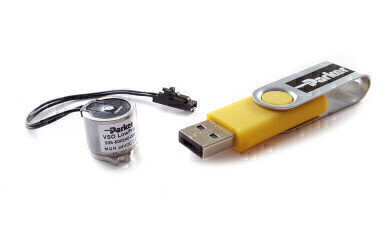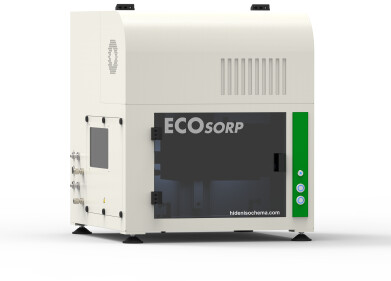Laboratory Products
Miniature Valve Delivers High Performance in a Compact Form for Medical Device Applications
Jul 21 2016
Parker Hannifin has unveiled its VSO® LowPro miniature proportional valve for controlling the flow rate of inert gases in medical equipment. Just 16mm wide by 14mm tall, the valve addresses a key requirement for small portable devices where installation space is at a premium. Typical applications for the new valve include pressure control, volumetric flow control and pulse dose control in devices such as portable oxygen concentrators, ventilators and patient monitors.
With the VSO® LowPro reliability is assured with operations up to 25 million cycles, thus delivering that much needed peace of mind. By their very nature, portable medical devices also need to consume low power and feature high performance, this valve series delivers in these two vital areas. The VSO® LowPro miniature proportional valve offers typical flow rates of up to 45 SLPM with a maximum of 2W power at room temperature. What’s more with an orifice of up to 2.03 mm and a weight of 12 g, the VSO® LowPro can perform the function of valves three times its size without sacrificing power.
The new valve features a low profile design which simplifies mounting and eliminates cartridge configurations that require complex and expensive machining, thus keeping a tight control on cost. Compliant with REACH, RoHS, CE, ISO 10993 and ISO 145001, three voltage models are available, 5, 12 and 24 VDC. The two-way, normally closed VSO® LowPro valve is designed to handle air, oxygen or any non-reactive, non-condensing gases. Very low power, typically 1W, enables portable capability and allows designers to reduce the size of the power supply or battery.
The VSO® LowPro valve can be controlled by either voltage or current; however, it is recommended that current control be employed to ensure the most repeatable valve flow performance. For PWM (pulse width modulation) control, the signal applied to the valve should have a frequency of between 5-12 kHz, with the optimum frequency dependent on the application.
Digital Edition
International Labmate Buyers' Guide 2024/25
June 2024
Buyers' Guide featuring: Product Listings & Manufacturers Directory Chromatography Articles - Enhancing HPLC Field Service with fast-response, non-invasive flowmeters - Digital transformatio...
View all digital editions
Events
Jul 07 2024 Dublin, Ireland
Jul 20 2024 Denver, CO, USA
Jul 21 2024 Cape Town, South Africa
Jul 28 2024 San Diego, CA USA
Jul 30 2024 Jakarta, Indonesia


















